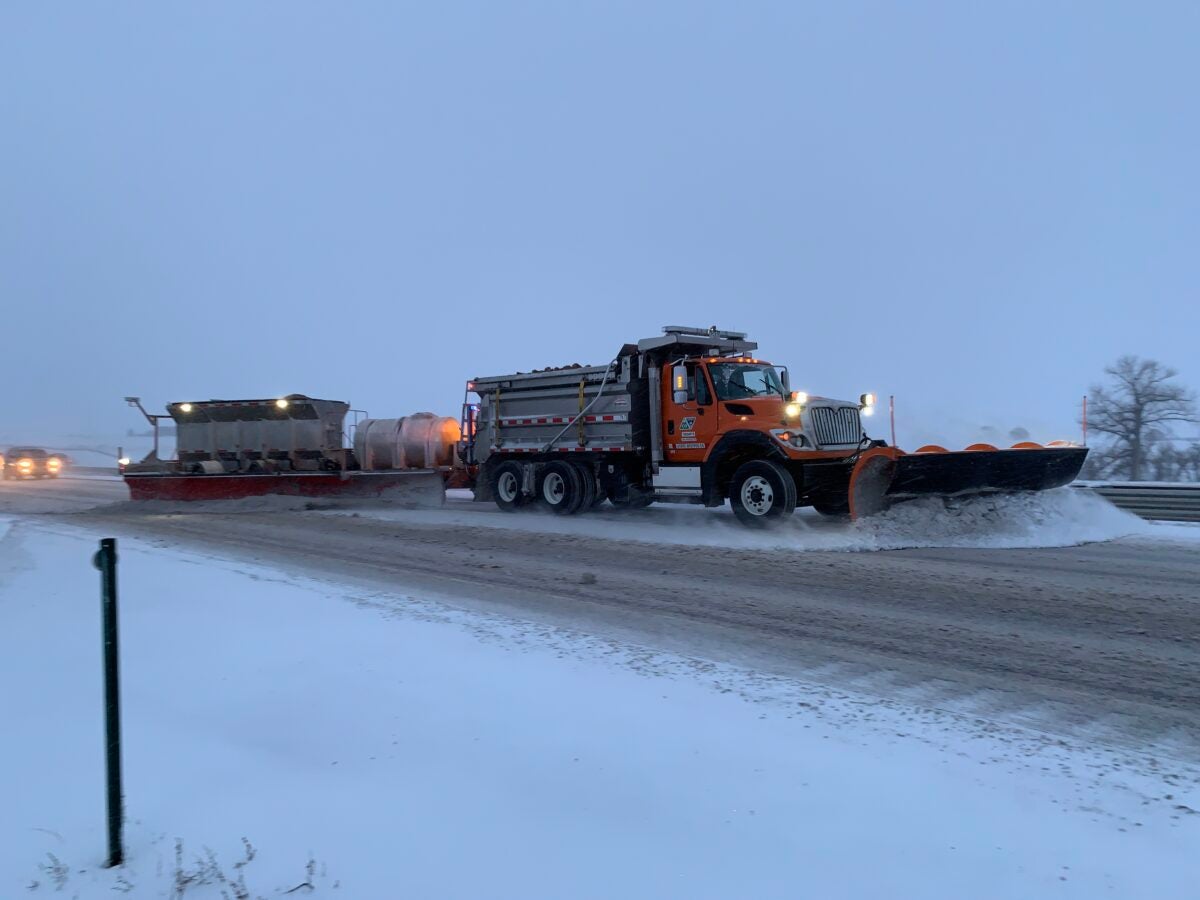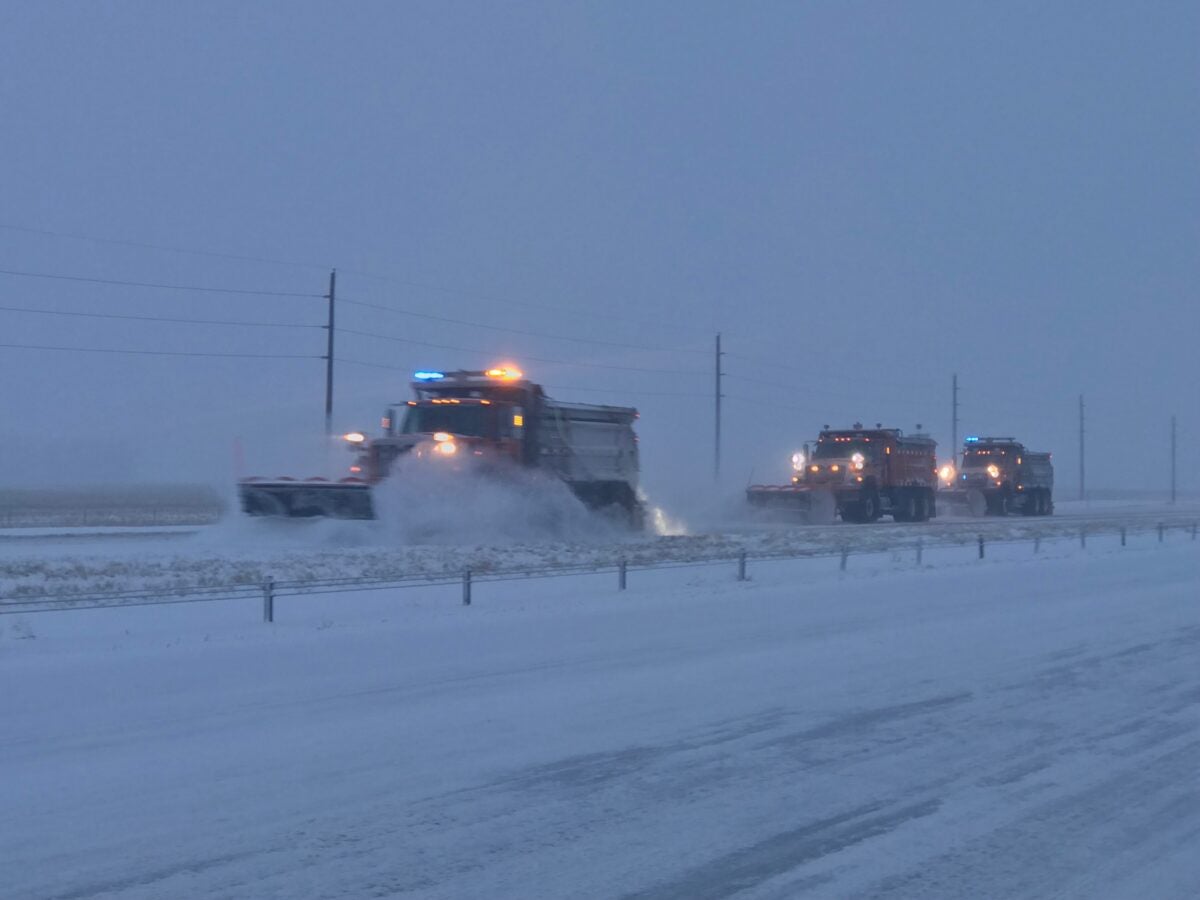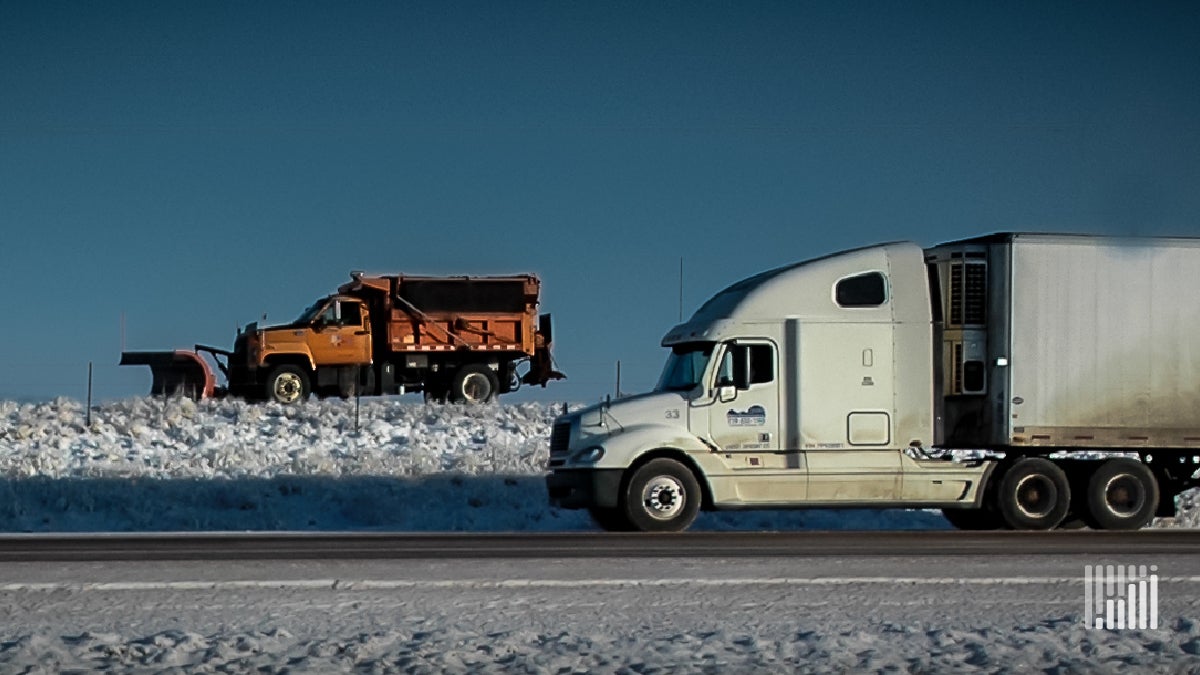Many states have been trying to dig themselves out of snowplow driver shortages in recent years, forcing them to step up their recruiting, training and retention strategies.
According to a UPI report, Montana is missing half of its temporary drivers this year. As of early December, the Pennsylvania Department of Transportation had hired just 40% of its usual seasonal workers. And in Kansas City, Missouri, transportation officials have been scrambling to onboard new plow drivers to fill a 30% gap in the workforce.
Related: Viewpoint: FMCSA finalizes new training requirements for CDL
In a February survey by the American Association of State Highway and Transportation Officials (AASHTO), 84% of respondents said they were experiencing higher-than-normal vacancy rates among snowplow operators. The survey was sent to 31 state departments of transportation (DOTs) and 51 municipalities.
Higher-paying private sector jobs topped the list of reasons for the shortages.

Rocky situation in Colorado
John Lorme, director of maintenance and operations for the Colorado Department of Transportation, told FreightWaves that higher-paying jobs in metropolitan areas have stiffened the competition, including jobs that don’t necessarily require a CDL, as snowplow driving does.
“Safeway pays really, really well. Probably almost 5 or 6 dollars an hour more, and it’s a more set schedule,” Lorme said. “Amazon is hiring every day.”
Lorme added that high demand nationwide for truckers driving 18-wheelers during the COVID pandemic has shrunk his pool of applicants for plow operator jobs. The statewide DOT vacancy rate for highway maintenance professionals — normally around 10% — rose to almost 20% by last July.
“We saw fewer applicants interviewing, even less with minimum qualifications,” Lorme said. “This is why we focused on retention over recruiting.”
Snow plowing is the “bread and butter” of winter maintenance in Colorado, Lorme said, and CDOT prides itself on keeping the roads safe and open. Nontraditional plow drivers from CDOT maintenance and engineering have helped augment snow removal since they’re also required to hold a CDL.
Asked if he has ever had to tell the public that certain areas just weren’t going to be plowed because of staffing issues, Lorme responded, “I’ve never had to say that, thank goodness.”
But it’s not just an issue of retaining snowplow operators. It’s about retaining the 1,600 or so highway maintenance professionals in the state who all have to plow snow, as well as fulfill other important responsibilities during warmer months.

So, CDOT officials raised base pay by 7.5% earlier this year and set up an automatic 3% raise for the next two years. They also added housing stipends of up to $800 per month to retain drivers in the ski resort areas along the Interstate 70 corridor. These areas have notoriously high vacancy rates due to their high cost of living.
But CDOT didn’t ignore hiring altogether, recruiting aggressively at career fairs.
“We’ve really started trying to get our foot in the door with junior colleges because we have tuition reimbursement programs,” Lorme explained. “We’re trying to get involved with technical schools to get mechanics because our mechanics also plow snow.”
CDOT has also implemented new hiring practices in the Denver area, where vacancies are highest in the state. Trainees now start at nearly $20 an hour, even if they don’t have all the required skills.
Related: Keep right! Virginia bill outlines winter storm lane restriction for truckers
They go through a “boot camp” that includes a month of CDL training, followed by 30 days of training in the classroom and the CDOT maintenance academy, as well as on-the-job training with a mentor. At the end of 60 days, they become full-fledged maintenance operators.
Lorme said it’s working. The Denver metro area alone hired 35 CDOT employees in November, more than the entire state has ever hired in any month. Most were trainees, half of whom passed the program. As of last week, they were still with CDOT.
“The pay increases, constantly working with our HR to come up with new and innovative ways to recruit and retain people — I’m pretty excited about the future,” Lorme said.
A different approach
Other states, like New Hampshire, also suffered the consequences of the high demand for COVID response drivers.
Caleb Dobbins, state maintenance engineer for the New Hampshire Department of Transportation (NHDOT), told FreightWaves that a statewide hiring freeze during COVID made matters worse. He was allowed to fill a limited number of overall DOT positions, including just a few plow operator spots.
“What we’ve seen is, that since the end of any restrictions on hiring, which were lifted about a year ago, our number of truck driver vacancies had actually gone up,” Dobbins said. “So, even though we can hire all positions now, we have about 20% more vacancies than we did a year ago.”
That’s roughly double the average vacancy rate, Dobbins added.
He currently has 572 of 683 NHDOT field positions filled, and 550 of those are held by drivers with a CDL. All of these positions are involved in winter maintenance.
In addition, NHDOT spends some $10 million a year on private contractors who supply about 300 pieces of rented equipment for winter operations. However, the contractors have also had a hard time finding drivers the past few years.
“This year, in order to alleviate that, the department actually provided a 15% increase in the rates for hired trucks in order to both keep the ones that we had or try to attract people who hadn’t previously worked for us,” Dobbins explained.
This was on top of a 15% contractor rate increase a few years ago. Dobbins said that the increases have helped the agency maintain its level of service without having to make major adjustments.
But nothing has been done on the state’s side as far as raising wages for employees or recruiting more aggressively. Field employees receive a weekly stipend of $35 during the winter, which hasn’t been increased.
Dobbins didn’t have an explanation as to why NHDOT upper management hasn’t done more. He understands that higher wages are necessary to keep up with the increased cost of living, especially in parts of the state closer to Massachusetts. The state offers good benefits, but, as Dobbins said, “you can’t eat benefits.”
As in Colorado, NHDOT crews like their work and take great pride in making roads safe for family, friends and neighbors. They take it personally, according to Dobbins. But for those who have left for other jobs, it came down to salary.
“They also need to take a look at their own personal lives and what they’re giving their families, and that’s what they have to weigh,” Dobbins said. “I’ve never talked to anybody who has left that was really happy about leaving.”
Dobbins also said an aging workforce has contributed to his snowplow driver shortage, with many people retiring recently who had been there for decades.
NHDOT was able to make it through the past few winters without selling the public short. But, in the AASHTO survey, 25% of the respondents said they had made modifications to their levels of service, with 6% saying they were considering changes.
Other factors
Rick Nelson, AASHTO’s Snow and Ice Cooperative Program (SICOP) coordinator, told FreightWaves that wage gaps between state DOTs and county and local municipalities have also contributed to driver shortages.
“When the state establishes the pay scale, they’re establishing that pay scale on a statewide basis,” Nelson said. “A snowplow operator in a very congested urban area is going to make the same as a snow plow operator in a very remote area within a state. So, it’s hard for salaries to keep pace with different locations within a state.”
Some DOTs have leveraged equipment technology to help make up for the driver shortage. Colorado and New Hampshire use tow plows, a setup in which a truck pulls a trailer with a second plow mounted on its side. The trailer can be steered into the adjacent lane, so one truck can plow two lanes at a time.
“You don’t really want them up on mountain passes with lots of curves and things like that. But where you can use them, they’ve become a force multiplier,” Nelson explained.

Agencies have also installed road weather information systems along highways to fill in gaps where the National Weather Service has no observation sites. This gives DOTs real-time situational awareness to help determine whether they even have to send plow drivers to certain areas.
Nelson also said that many respondents had issues retaining new plow drivers. This has become a trend since states have been able to offer full CDL training, thanks to new rules set by the Federal Motor Carrier Safety Administration. In states not offering incentives to stay, younger drivers have been leaving for better-paying jobs at trucking companies once they earn their CDLs.
Other plow drivers have been leaving for traditional truck driving jobs out of frustration because they weren’t utilizing their CDL skills except during winter. They spend most of their summers filling potholes and cracks, as well as repairing guardrails.
“To say, OK, you’re only going to be driving a truck half the time out of the year and the other half of the time you’re going to be doing laborer work with the DOT … it’s kind of a difficult situation,” Nelson said.
Click here for more FreightWaves articles by Nick Austin.
You might also like:
Canadian trucker named Highway Angel for helping spinout victims
Drivers rate best truck stops in America
Worst 10 states for winter fatal traffic crashes







